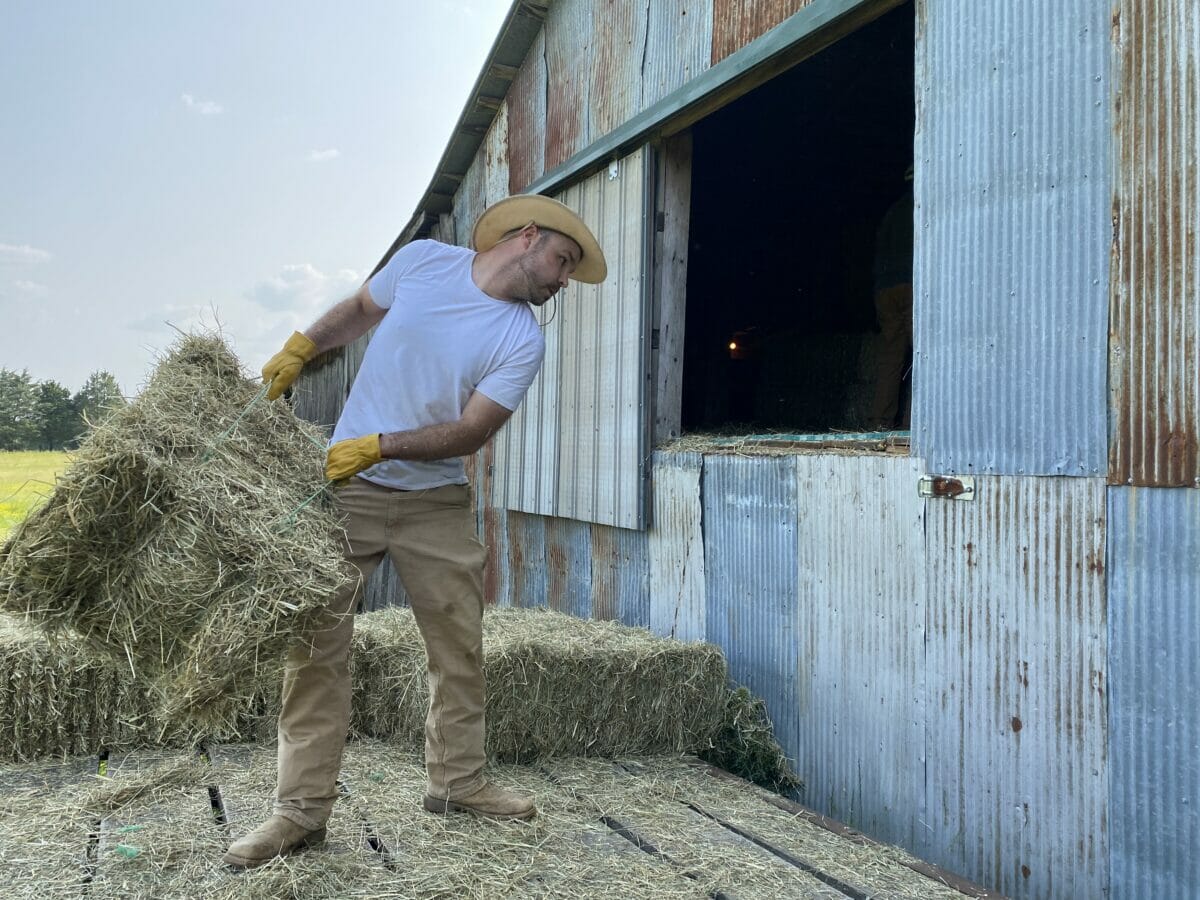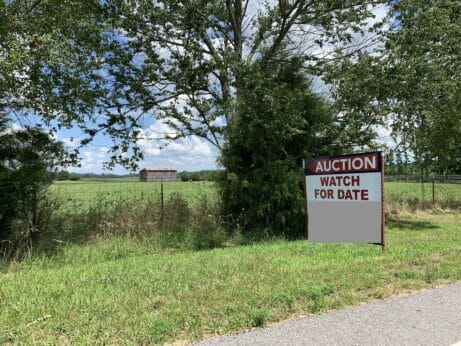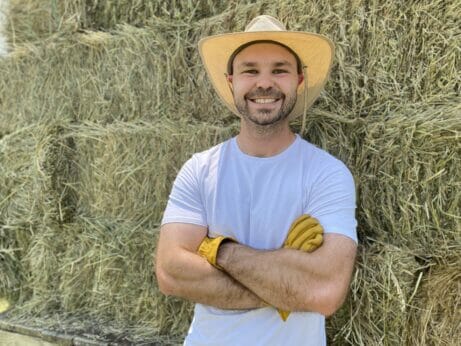Consolidation is threatening small and midsized farms with extinction. Here’s why that’s a big problem.

Small farmers are struggling. For decades, they’ve been told to “get big or get out,” an imperative levied against them by both public and private forces.
Recent statistics on American agriculture reveal a decline of 200,000 farms between 2007 and 2022. Since 1935, we’ve seen a decrease of 4.8 million farms—to 2 million from 6.8 million. As agriculture has industrialized and become more capital-intensive, leading to dominance by wealthy, large-scale producers, much of the decline has come at the expense of small and midsized farmers.
This phenomenon isn’t just happening in the United States. New research published in Nature Sustainability projects that, if trends continue, the number of farms across the world will be sliced in half by the end of the 21st century as consolidation of land, wealth and power reshapes our farming and food landscape.
The marginalization of smaller-scale farms has severe consequences. When farms are continually consolidated—when there is one 5,000-acre farm in a community, for example, instead of 50 100-acre farms—fewer people remain in rural areas. That decreased population leads to social and economic impacts, with ripple effects that harm small businesses, school systems and other community institutions.
It’s even worse when the owners of large-scale farms don’t live in or meaningfully contribute to the community. Recognizing the value of farmland and the fact that, as a popular phrase goes, “they’re not making any more land,” investors are buying up agricultural acreage. These investors vary from agri-business “farmers” who manage operations from far-away offices to private equity firms. Their deep pockets price out new and underserved farmers looking to purchase land and root into a community. Data shows that land access is the biggest challenge faced by aspiring next-generation agrarians.

Small and midsized farmers are being forced out, with consequences for rural communities. (Photo: Brooks Lamb)
Environmental and agricultural impacts loom, too. Small farms tend to be more diversified than large-scale operations. That diversity supports healthier wildlife habitat, improved soil health and greater climate resiliency. These farms are essential for food security and local and regional food systems, where products grown in a community can stay in that community rather than being shipped across the country. While we’re all tired of talking about the COVID-19 pandemic, we should remember the importance of these smaller farms and local markets when the industrial food system couldn’t stock grocery store shelves.
If we dig deeper, another less obvious threat emerges from the consolidation of American agriculture: a growing disconnect with the land itself. Smaller-scale farmers often have an intimate awareness of their place. Their landscapes are small enough to know and close enough to touch, leading to an “eyes-to-acres” ratio, as conservationist Wes Jackson calls it, that enables attention and care.
That “ratio” changes from place to place. After all, a “small farm” in my home state of Tennessee is different than a “small farm” in Kansas or Montana, Massachusetts or Maine. But the capacity for awareness and attunement remains.
In Love for the Land: Lessons from Farmers Who Persist in Place, I explore these connections with the land, as well as the challenges that make maintaining connections difficult. In two Tennessee counties, which serve as microcosms of our current agricultural situation, I interviewed dozens of farmers and local leaders who shared the impacts of consolidation. “I hate it,” one person said, “but the farm program we’ve got today put the ‘little guy’ out of business. The little farmers can’t keep up with the big ones.”

Brooks Lamb. (Photo courtesy of Regan Adolph)
It isn’t just consolidation threatening these small and midsized farmers. They also face pressure from real estate development. “Bedroom communities” are transforming once-rural places as people who work in nearby cities look to the hinterlands to build houses. Yet, because these new residents spend most of their waking hours in other places working, shopping and eating, they may not be invested in their new home areas. Ironically, their homes may be on large residential lots that qualify as “farms” given lax definitions.
Farmland conversion to subdivisions, strip malls and low-density housing is acutely affecting Tennessee, but it’s prevalent across the country. According to American Farmland Trust, Tennessee alone is expected to convert more than one million acres of agricultural land between 2016 and 2040, while the United States is on pace to compromise 18.4 million acres. Conversion will especially affect smaller farms.
Additional challenges await “underserved” populations, such as Black farmers. Those interviewed for the book describe facing racial injustices in the past and present on top of other agricultural and economic difficulties, which is consistent with the experiences of farmers of color across the United States.
Even in the face of consolidation, rural gentrification and systemic racism, some smaller-scale farmers persevere. Their sometimes-self-sacrificial stewardship is driven by love for the land, leading to what farmer-writer Wendell Berry describes as fidelity or devotion to place. When told to “get big or get out,” these farmers choose neither. In doing so, they show us the power and potential of people-place relationships.
We can all learn from these farmers’ examples. Whether we live on farms or in small towns, suburbs or big cities, we can connect with the earth where we are. That may be on a farm or it may be in a backyard, a community garden or an urban park. In various settings, we can work to cultivate affection and fidelity. Nurturing these virtues would lead to collective, empathetic care for our places, our neighbors and the planet.

Sunset over a farm in Marshall County, Tennessee. (Photo: Brooks Lamb)
Yet, we must do more than learn from these farmers. We also need to support them.
We can leverage love for the land into strategies and policies that support right-sized farming, rural communities and the environment—which in turn helps us all. One such way to yield progress is through the creation of an Office of Small Farms within the United States Department of Agriculture. Too often, federal farm programs take a “one-size-fits-all” approach that simply doesn’t work for many farmers. With a federal office focused exclusively on assisting America’s small farms, we can help these essential people and places get the resources, technical assistance and information they need.
Legislation to establish an Office of Small Farms has been widely endorsed by a diverse group of individuals and organizations. “Small farms are the heart and soul of our agricultural landscape, contributing to our economy, food security and the resilience of our local food supply chains. It’s time we do more to ensure that all farmers, regardless of the size of their farms, have equitable access to the support they need to flourish,” says Senator Cory Booker, a co-sponsor of the bill.
An Office of Small Farms won’t fix all the problems in our agricultural system. But it’s a much-needed start that should appeal to anyone who has the true needs of America’s rural communities and small family farmers at heart, regardless of political affiliation.
Statistics and on-the-ground evidence show that, in agriculture, size matters. Rather than stand back and watch consolidation continue, we can learn from the small and midsized farmers who persist, and we can work to ensure a future for farming that values attention and affection.
Brooks Lamb is the author of Love for the Land: Lessons from Farmers Who Persist in Place (Yale Univ. Press, 2023). He also works as the land protection and access specialist at American Farmland Trust. Brooks grew up on a small family farm in rural Tennessee.
As we become fully immersed in the challenges of rapid climate change small farms have another attribute not available to medium or mega farms, rapid adaptation to change.
Large operations have tremendous investments in infrastructure and often very specialized equipment. If the crop they have focused on is no longer viable in their area they can’t quickly adjust to deal with that reality without having to take a enormous loss on their investments. Small farms with more generalized equipment and infrastructure can rapidly adjust to the changes in their area, remain productive, and profitable.
I want to have a tree farm in Bonifay Florida, have the acreage, but the town does not allow me to have it. I need a government office to help me get it. It is good for the planet!
Can you discuss more regarding the impact of expenses in farming from equipment, fertilizer, regulations, fuel, seed, industrial demand for soy, corn versus vegetable and meat production?
Please for good work for nations that we need.. to be saved.
In BHARAT (India), it is altogether different scenario where CONSOLIDATION of land holdings is very much required/desired.